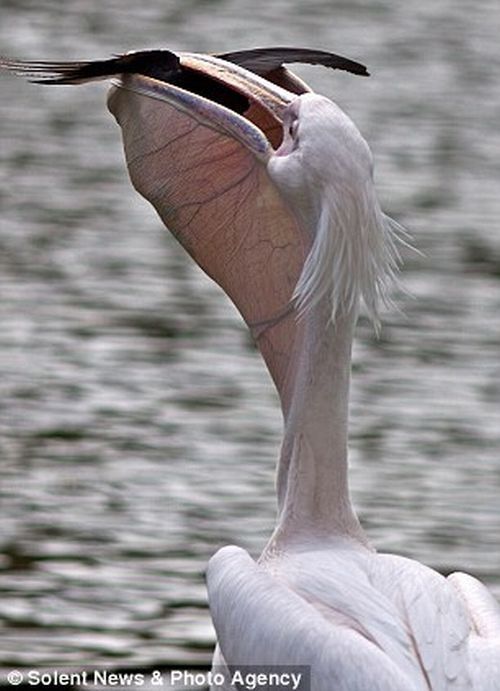|
|
Pelican Swallows A Pigeon
|
In all species copulation begins shortly after pairing and continues for 3 to 10 days before egg-laying. The male brings the nesting material, ground-nesters (which may not build a nest) sometimes in the pouch and tree-nesters crosswise in the bill. The female then heaps the material up to form a simple structure.
Both sexes incubate with the eggs on top or below the feet. They may display when changing shifts. All species lay at least two eggs, and hatching success for undisturbed pairs can be as high as 95 percent, but because competition between siblings or outright siblicide, usually all but one nestling dies within the first few weeks (or later in the Pink-backed and Spot-billed species). The young are fed copiously. Before or especially after being fed, they may seem to have a seizure that ends in falling unconscious; the reason is not clearly known.
Parents ground-nesting species have another strange behavior: they sometimes drag older young around roughly by the head before feeding them. The young these species gather in "pods" or "crèches" up to 100 birds in which parents recognize and feed only their own fspring. By 6 to 8 weeks they wander around, occasionally swimming, and may practice communal feeding.
Young all species fledge 10 to 12 weeks after hatching. They may remain with their parents afterwards, but are now seldom or never fed. Overall breeding success is highly inconsistent.
|
|









